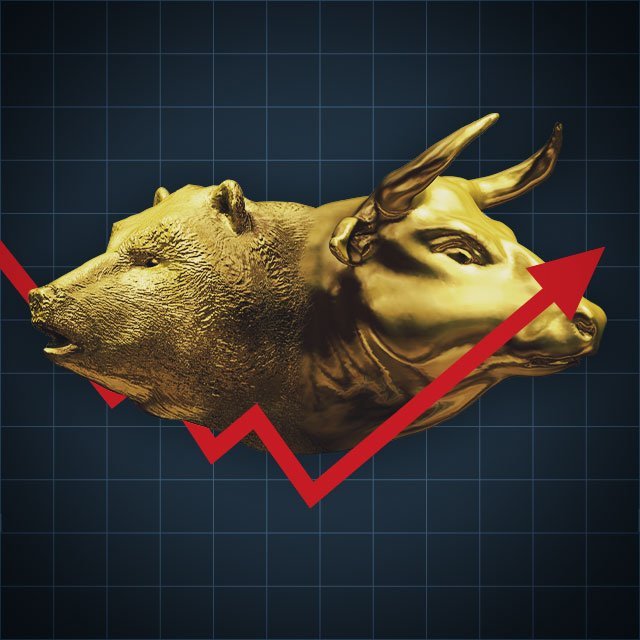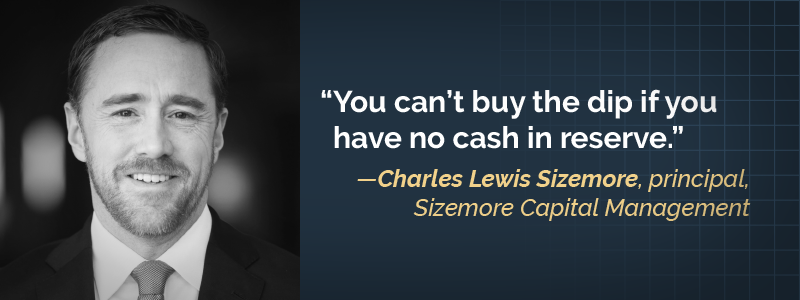A Brief History of Economic Crises, Crashes and Recoveries

What You Need to Know
Stagflation, which economists once considered an impossible problem, became reality in the 1970s.
The dot-com bubble of the 1990s illustrates the importance of keeping cash on hand.
While today’s soaring inflation and supply chain problems are concerning, the U.S. has historically recovered well from economic crises.
The current economic turmoil could read like a series of tabloid headlines: Pandemic! Highest inflation in decades! War in Ukraine!
While this conflation of disasters may be unprecedented, we’ve certainly been through financial crises before. Each one “provides us with knowledge,” say David Sherman and Bruce Falbaum of CrossingBridge Advisors in Pleasantville, New York, in a joint email.
What can be learned by looking back at the downturns and recoveries of the past half-century? What can those events teach us about savings, investing and retirement planning going forward?
1970s Oil Crisis, Market Crash and Stagflation
In many ways, the current situation resembles that of the 1970s.
Back in October 1973, the OPEC nations imposed an oil embargo against the U.S. and other Western countries, ostensibly in retaliation for their support of Israel in the Yom Kippur War. In the ensuing nine months, crude oil prices doubled. By the end of the decade, thanks in part to the Iranian revolution of 1978 and 1979, they doubled again.
It wasn’t just oil prices. Higher costs rippled through the economy; inflation surpassed 13% by 1980, double what it had been before the energy crisis. At the same time, unemployment grew from less than 5% at the end of 1973 to almost 11% at the end of 1982.
The combination of rapid price increases and slow growth led to stagflation.
What Is Stagflation?
“Stagflation” is a portmanteau of stagnation and inflation. It’s what occurs when you mix slow economic growth with steadily rising prices and high joblessness, all at the same time. It means costs are going up while gross domestic product (GDP) — that is, the total value of goods and services produced by the country — is going down.
GDP is considered a measure of a country’s overall economic health. Declining GDP indicates poor health. Inflation means that businesses and consumers have decreased purchasing power. In other words, they are in poor economic health, too. The high unemployment rate only exacerbates the slowdown of the economy.
Before the 1970s, stagflation seemed like an impossible problem. Most economists at the time thought that inflation and unemployment rates moved in opposite directions. If people don’t have jobs, they can’t afford things, so prices come down; conversely, the more people had jobs, the more they would spend, pushing prices up. But the stagflation of the 1970s proved such assumptions false. Economists had to rethink the mechanics of inflation and how best to boost economic growth without pushing prices too high too fast.
So far, we have not seen stagflation today. Unemployment remains low, and demand for goods and services is high. “We can learn from the ’70s, but things ARE different,” says Morgan D. Hill, CEO of Hill & Hill Financial in Woodstock, Georgia. Inflation isn’t anywhere near what it was in the 1970s, he says. Even oil prices pale in comparison. Adjusting for inflation, he says we would have to see crude oil prices “in excess of several hundred dollars a barrel” to match 1973’s levels.

How Did Investors Respond?
In the ’70s, in reaction to stagflation, investors left the stock market in droves. In 1973, the S&P 500 fell 17%. A year later, the benchmark declined another 30%.
“The bear market of 1973-1974 was a slow-motion slide that seemed undeterred, until stocks made a significant recovery without warning,” recalls Brian Chang, senior wealth advisor at Kayne Anderson Rudnick in Los Angeles. Indeed, the index advanced nearly 32% in 1975. “Investors should never underestimate how much patience and courage it can take to outlast a bear market,” he says.
It’s worth noting, however, that fixed income instruments paid a lot better in the 1970s and into the 1980s than they do today. At that time, the Federal Reserve kept interest rates high. The yield on the 10-year Treasury was more than 15% in September 1981. Retirees didn’t have to chase after riskier stocks to generate yield.
Another difference today is that there are “more instruments to hedge against the dollar losing value,” says Craig J. Ferrantino, founder and principal of Craig James Financial Services in Melville, New York. He cites Treasury inflation-protected securities as a type of stagflation-resistant instrument that didn’t exist in the 1970s. “The market might be more prepared today than in the past,” he adds.
To be sure, one of the biggest changes is our relative self-sufficiency in energy. Before the oil embargo, the U.S. imported roughly 35% of the oil it consumed. Today, it imports less than 20%. So even if we banned Russian oil indefinitely, and prices kept ballooning, “the fix today would be to ramp up our domestic energy production,” Ferrantino says.
1981-82 Recession
Economists have also learned a great deal more about the impact of monetary policy on inflation.
In August 1979, Paul Volcker became chair of the Federal Reserve. To combat the high inflation, he raised the federal funds rate from roughly 11% in 1979 to 20% by the middle of 1981.
“This exacerbated the short-term negative impact on the economy and triggered the failure of many savings and loan institutions,” says Annette Helmer, an advisor at Johnson Financial Group in Madison, Wisconsin. “While ultimately this was successful in breaking the inflation spiral, the economy didn’t start to recover until 1984.”
The Savings and Loan Crisis
Savings and loan (S&L) institutions were established during the Great Depression of the 1930s to fund home loans for those who couldn’t afford homeownership. In the 1960s, they were given preferential treatment over regular commercial banks, in that they were allowed to offer higher payout rates on their savings accounts. But in the 1980s and early 1990s, more than 3,000 of them went out of business. Because they are federally insured, this massive run of failures ended up costing U.S. taxpayers more than $100 billion.
The S&L crisis was exacerbated by a loosening of regulatory constraints. In 1982, the federal government eliminated interest-rate caps on these institutions, to make them even more competitive with banks, and allowed S&Ls to hold a greater portion of their assets in subpar loans. As a result, S&Ls began attracting investors with ever higher yields while investing those assets in risky instruments such as junk bonds.
Eventually, a combination of overspeculation and a degree of fraud led to a wave of defaults. These problems were “accompanied by a rout in the equity markets,” says Edward Olanow, portfolio manager and director of investment solutions at Weiss Multi-Strategy Advisers in New York. Most investors’ portfolios “were pummeled,” he says. “Even commodities did not escape the carnage.”
Lessons From the 1981-82 Recession
Some observers compare the Fed’s policies then — raising interest rates to rein in inflation — to today’s monetary tightening. But others point out significant differences.
“In the early ’80s, fixed income rates were much higher [than now],” says Marc Balcer, a senior vice president and director of investment strategy at Girard, a division of Univest Wealth. “Although inflation was a major concern, one could purchase CDs or Treasurys and earn 10%-plus relatively safely.”
After about two years of corrective action from the central bank, the economy turned around and “investors enjoyed one of the greatest bull markets in equities and fixed income for decades,” says Olanow of Weiss Multi-Strategy Advisers.
1987 Stock Market Crash: Black Monday
There was, however, an exception. On Oct. 19, 1987, U.S. markets dropped by more than 20% in a single day. Known as “Black Monday,” the massive stock market crash was attributed primarily to computer program-driven trading, which was still relatively new. High-frequency trading algorithms, based on statistical modeling, could trigger thousands of orders all at once. Human investors, in turn, panicked, further fueling the selloff.

But another factor was at play. New Federal Reserve Chair Alan Greenspan was tightening monetary policy to slow the devaluation of the dollar, which in turn caused a rise in interest rates. By the time the stock exchange opened on Black Monday, the pressure to sell had already built up over the preceding weekend. The volume of sell orders was overwhelming.
After the market crash, the Fed moved quickly to cut interest rates and induce banks to provide plentiful liquidity. Stock exchanges also worked to block program trading, instituting “circuit breakers” that freeze trading when a benchmark drops too quickly.
It took 18 months for equities to recover, but then the bull market resumed.
The ’90s Dot-Com Bubble and Recession
Unfortunately, that bull market was soon swept up in speculative excitement that was largely fueled by technology startups. The internet was all the rage, and throughout the 1990s a “dot-com bubble” emerged. From 1995 to 2000, the tech-heavy Nasdaq index swelled from under 2,000 to more than 7,800.
“Diversification became a dead idea because it gave you a subpar return,” says Tucker Braddock, senior wealth advisor at Keel Point in Annapolis, Maryland. Clients “wanted a portfolio of funds that all owned the same sectors and had the same vulnerabilities,” he says. People “lost track of business fundamentals and the fact that winners don’t repeat forever.”





